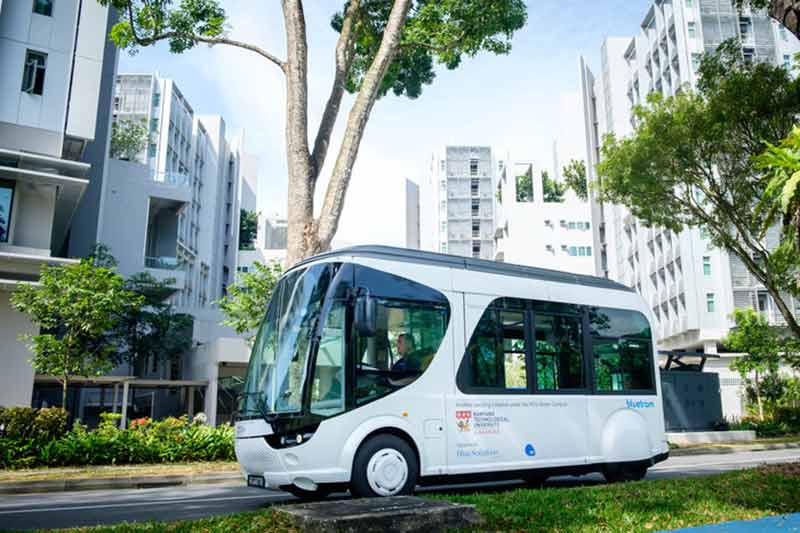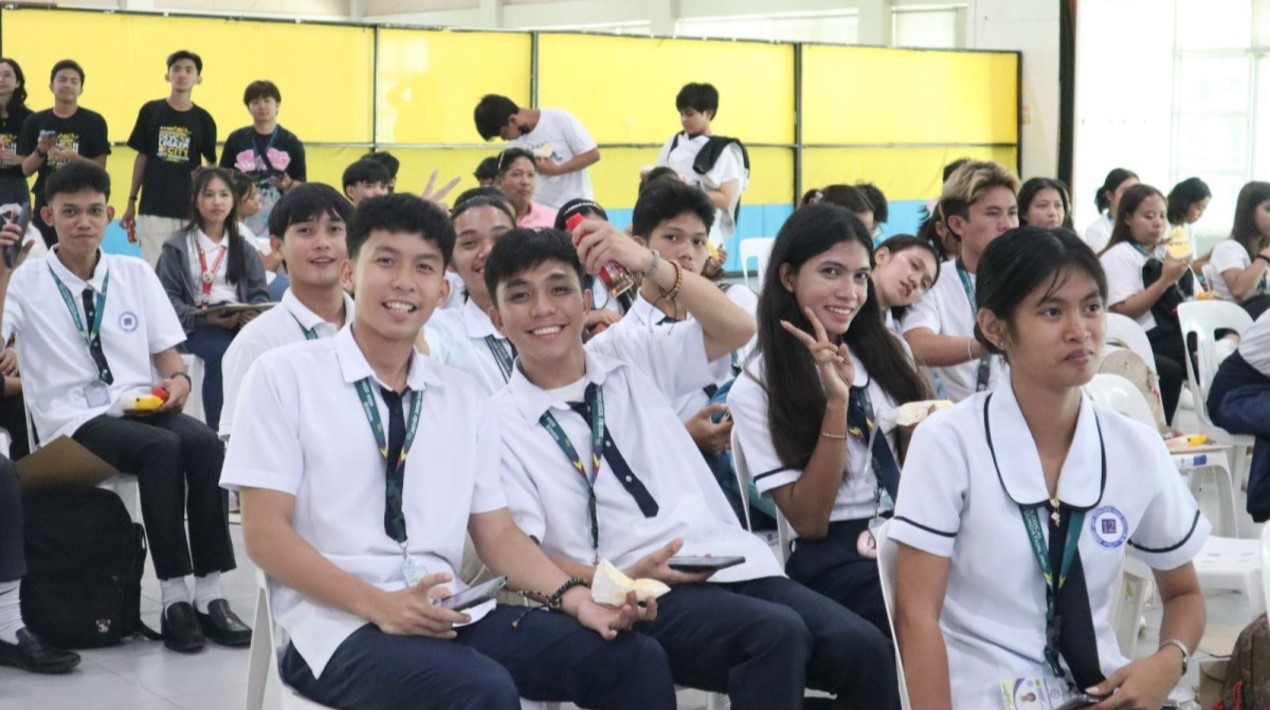
As part of its recently announced Smart Campus initiative, Nanyang Technological University, Singapore (NTU Singapore) and BlueSG Pte. Ltd., a subsidiary of Blue Solutions owned by the Bolloré Group, have launched Singapore’s first flash-charging electric shuttle.
Named the NTU-Blue Solutions Flash Shuttle, the shuttle is equipped with supercapacitors and a LMP® (Lithium Metal Polymer) battery developed by Blue Solutions and it can travel two kilometres on a single charge, with backup power that provides for an additional 30 kilometres.
The fully electric vehicle only requires 20 seconds to recharge at stations which are fitted for its quick charging while passengers board and alight, enabling emission-free continuous operation. Thereby the Bluetram replicates the efficiency of trams without the need for offline charging, unlike other electric vehicles that function solely on batteries.
Moreover, the costs of operating Bluetram is five to ten times lower than tram systems as it does not require costly infrastructure such as rails or catenary, and a whole line can be deployed in a matter of weeks.
Road trials have been planned for the 22-seater shuttle between NTU’s Halls of Residence at North Hill and JTC’s CleanTech One, which is part of the Jurong Innovation District where special charging stations have been built. NTU students would be able to ride the shuttle from the second half of 2018.
The joint research team comprising scientists from NTU’s Energy Research Institute (ERIAN) and BlueSG will study the actual on-road performance of the Bluetram in Singapore’s tropical climate, including the user behaviour of passengers.
This research partnership will run for two years and is supported by the Economic Development Board (EDB), Singapore. The collaboration is also one of the key initiatives under the France-Singapore Year of Innovation, which aims to intensify cooperation on innovation between the two countries in 2018.
The university is also in talks with BlueSG to install electric vehicle car-sharing stations, adding to the existing pool of electric vehicle charging stations around campus. This will enhance NTU’s connections with nearby communities in Jurong West, Jurong East, Choa Chu Kang and Bukit Panjang, and to the rest of Singapore.
Students, staff and faculty will be able to rent a BlueSG vehicle and drive it around Singapore and return the vehicle to any BlueSG charging station [1]. Members of the public can also drive into NTU’s campus using the convenience and flexibility of the BlueSG program.
NTU President Professor Subra Suresh, said, “The move to introduce electromobility and cutting-edge transportation technologies is part of our vision to transform NTU into a Smart Campus. The use of electric vehicles in public transportation is rapidly expanding across the world, as it offers more efficient transportation systems and reductions in greenhouse gas emissions.
“As a leading global university with deep expertise in sustainable technologies, the NTU Smart Campus is already a living testbed for various sustainable and energy-efficient technologies, and the perfect partner for BlueSG to test and develop electric shuttles for Singapore. We expect that the insights and innovations developed from this partnership will ultimately benefit Singapore and the world by enhancing the first-mile and last-mile transportation options,” he added.
Professor Lam Khin Yong, NTU’s Vice President (Research), said partnerships with leading industry players is crucial to translate research into real-life applications.
“NTU has a strong culture of translational research, especially in the areas of electromobility and sustainability. Having worked with leading industry players such as Volvo and BMW Group in similar areas, we look forward to working closely with Bolloré to testbed the new electric shuttle at NTU, under Singapore’s climate and traffic conditions.”
[1] Singapore’s first large-scale electric vehicle (EV) car-sharing programme was launched on December 12, 2017 by BlueSG, with 80 Bluecars and 32 BlueSG charging stations available for public use. The Land Transport Authority (LTA) worked closely with BlueSG to identify and secure suitable parking lots across Singapore for the vehicle charging stations. The programme witnessed 3,300 registered members and 5,000 rentals at 31 December 2017.
















